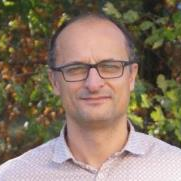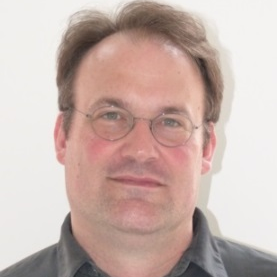Dynamics and Processes at Laser-Irradiated Surfaces—A Themed Issue in Honor of the 70th Birthday of Professor Jürgen Reif
A special issue of Nanomaterials (ISSN 2079-4991).
Deadline for manuscript submissions: closed (31 March 2022) | Viewed by 41168
Special Issue Editors
Interests: laser–matter interaction; silicon and silicon-organic-hybrid photonics; femtosecond laser processes; functional nanostructures; micro-optics; actuators; (bio)sensors and surface functionalization; semiconductor technology
Special Issues, Collections and Topics in MDPI journals
Interests: biomimetics; surface and interface science; surface functionalization; surface texturing; femtosecond laser processes; wettability; super-hydrophobicity; topography; complex surfaces; tribology; Lattice–Boltzmann method
Special Issues, Collections and Topics in MDPI journals
Interests: laser–matter interaction; femtosecond laser technology; laser ablation; ultrashort laser pulses and applications; micro- and nano-structured surfaces; surface functionalization by of laser-textured surfaces; biomimetics; ultrafast microscopy; time-resolved spectroscopy; plasmonics; laser processes in photovoltaics; laser safety
Special Issues, Collections and Topics in MDPI journals
Special Issue Information
Dear Colleagues,
This Special Issue is dedicated to the 70th birthday of Jürgen Reif, retired full professor, former Chair of Experimental Physics II of the Faculty of Physics of the Brandenburg University of Technology Cottbus—Senftenberg in Germany.
In recognition of his long-lasting scientific contributions and research lines, the topics of this Themed Special Issue are defined and include nonlinear optics and photonics, semiconductor technology, optical spectroscopy, surface dynamics, in situ measurement techniques, experimental and theoretical investigations of laser–matter interaction, applications of surface functionalization through laser-induced micro- and nanostructures, laser processing of polymers, numerical modeling of surface processes, etc.
For more than 25 years, the work of Prof. Reif has been very actively devoted to the study of fundamental mechanisms, dynamics, and applications of nano- and micrometer-scale laser-induced periodic surface structures (LIPSS), with a focus on self-organization processes. His contributions have revived and strongly stimulated the competition of the two main approaches (“schools”) to explain LIPSS, either via matter reorganization or via coherent electromagnetic scattering effects, and investigated their dynamics and applications in the fields of surface wetting and tribology.
Because these scientific areas lie at the boundaries between nonlinear optics and spectroscopy, surface and solid state physics, materials science and nanotechnology, and in honor and recognition of Prof. Reif’s scientific contributions, this joint Special Issue of the two journals Molecules and Nanomaterials welcomes the submission of original research manuscripts, perspectives articles, or reviews related to "Dynamics and Processes at Laser-irradiated Surfaces".
Accepted papers are published in the joint Special Issue in Nanomaterials or Molecules (https://0-www-mdpi-com.brum.beds.ac.uk/journal/molecules/special_issues/jurgen_reif).
Dr. Florenta Costache
Prof. Dr. Stéphane Valette
Dr. Jörn Bonse
Guest Editors
Manuscript Submission Information
Manuscripts should be submitted online at www.mdpi.com by registering and logging in to this website. Once you are registered, click here to go to the submission form. Manuscripts can be submitted until the deadline. All submissions that pass pre-check are peer-reviewed. Accepted papers will be published continuously in the journal (as soon as accepted) and will be listed together on the special issue website. Research articles, review articles as well as short communications are invited. For planned papers, a title and short abstract (about 100 words) can be sent to the Editorial Office for announcement on this website.
Submitted manuscripts should not have been published previously, nor be under consideration for publication elsewhere (except conference proceedings papers). All manuscripts are thoroughly refereed through a single-blind peer-review process. A guide for authors and other relevant information for submission of manuscripts is available on the Instructions for Authors page. Nanomaterials is an international peer-reviewed open access semimonthly journal published by MDPI.
Please visit the Instructions for Authors page before submitting a manuscript. The Article Processing Charge (APC) for publication in this open access journal is 2900 CHF (Swiss Francs). Submitted papers should be well formatted and use good English. Authors may use MDPI's English editing service prior to publication or during author revisions.
Keywords
- Laser–matter interaction
- Nonlinear optics and photonics
- Surface dynamics
- Laser-induced periodic surface structures (LIPSS), ripples
- Self-organization
- Surface functionalization and applications of laser-textured surfaces
- Polymer processing
- Micro- and nanotechnology
- Semiconductor technology
- Surface wetting and tribology
- In situ optical measurement techniques
- Numerical modeling of surface processes








